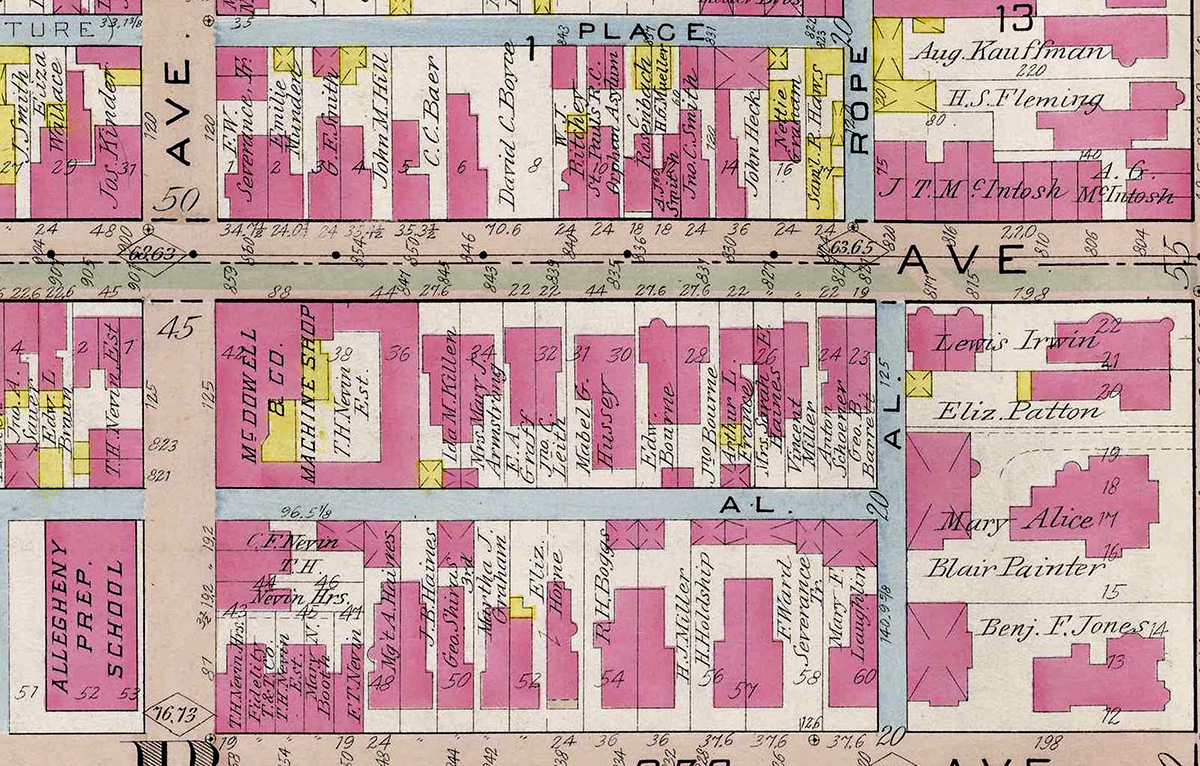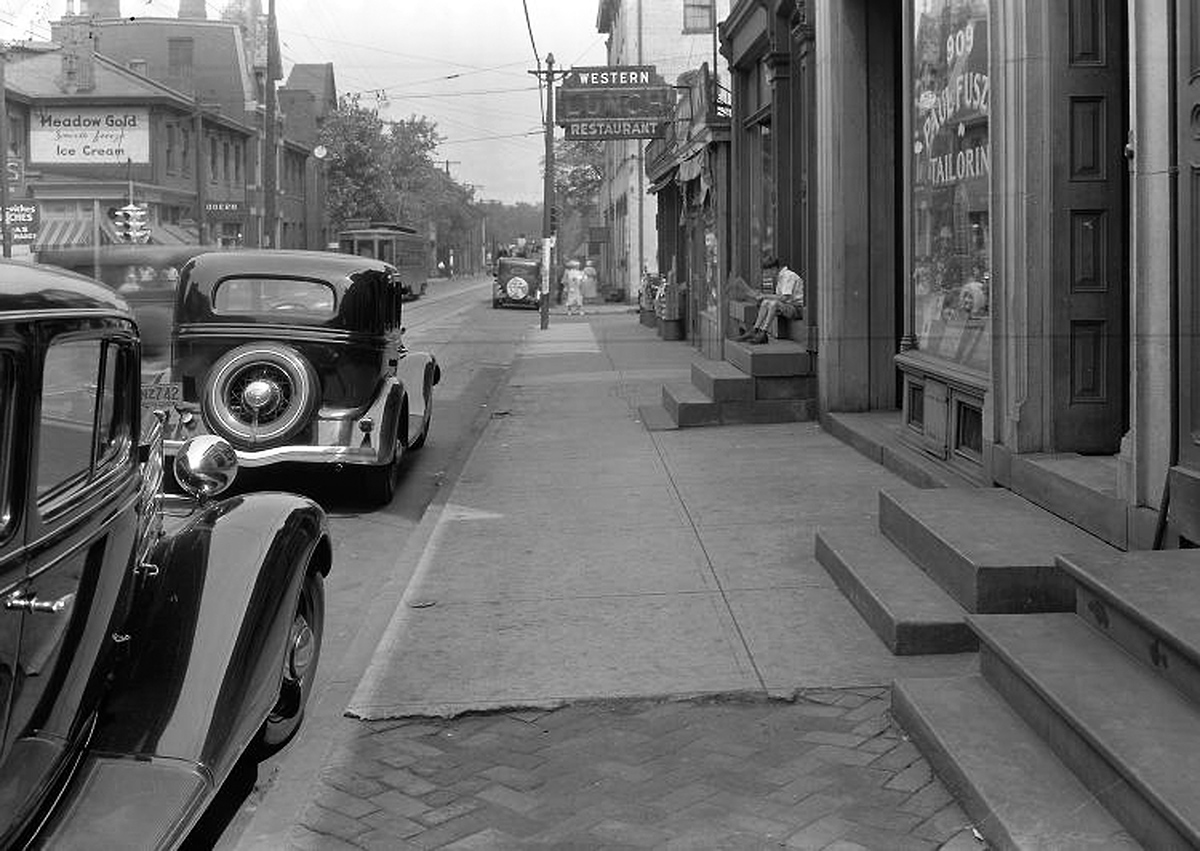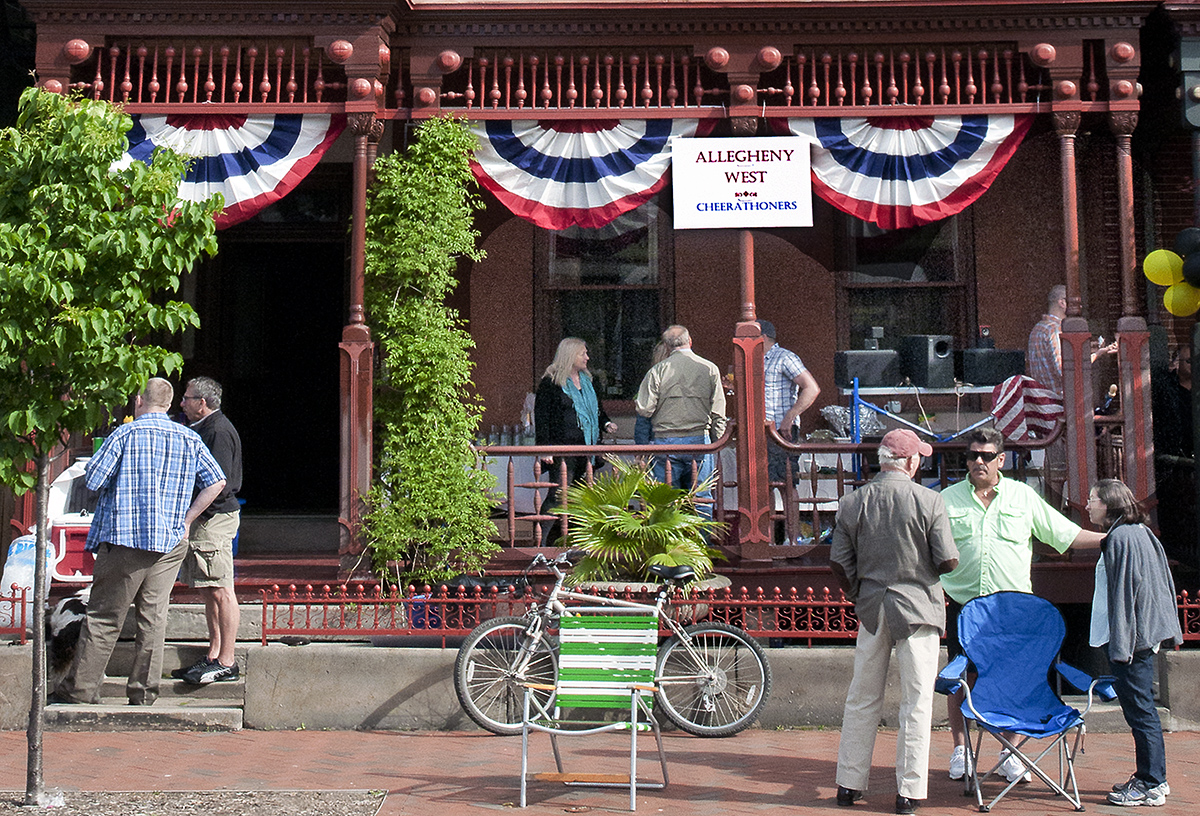About Allegheny West
This tiny historic community – officially the smallest neighborhood in Pittsburgh – is a lively, vibrant and exciting place to live, just as it was a century ago when it was the “Gold Coast” of the cities of Pittsburgh and Allegheny. The famous “Millionaire’s Row” was the leading edge of a very distinctive collection of residences (from mansions to humble dwellings) and residents (from robber barons to their servants).
Over the last several decades, these houses have been rediscovered and restored. Once again they are home to families whose everyday lives are spent in beautiful spaces
that glow with polished wood, marble and brass. Elaborate carvings, delicate etchings and the artistry of long-ago craftsmen are their daily pleasures.
Visitors come because they love the beautiful houses and churches, or because they are intrigued by the Victorian architecture. Perhaps the “ghosts” of past residents like Harry Thaw, Gertrude Stein, Mary Roberts Reinhart, the Carnegie’s, the Horne’s and the Kaufmann’s, the Jones’ and the Laughlin’s, lure others.
Allegheny West’s History

Map circa 1907
In the latter part of the 19th Century, this neighborhood was an elegant, primarily residential area in the City of Allegheny. Ridge Avenue and Irwin Avenue (now Brighton Road) were lined with the mansions of the men who made their millions in Pittsburgh’s iron and steel. North Lincoln Avenue was the address for many professionals, particularly lawyers. Western Avenue was well known for its many doctors. Beech and Grant (now Galveston) sheltered well-to-do merchants and bankers.
Co-existing with the stately homes were the Pittsburgh and Allegheny Orphan Asylum, Western Theological Seminary, Allegheny Preparatory School, a couple of warehouses and some light manufacturing. Luther’s Ice Cream Parlor was a popular place on Irwin Avenue, right next door to the round building housing the Battle of Gettysburg Cyclorama. No one knows what happened to that huge dramatic painting.

Western Avenue, 1934
Until the First World War, Allegheny West was the place for Pittsburgh’s elite. But everything changes and in the years between the wars, the leading families left their big homes and moved north to Sewickley or east to Squirrel Hill and Shadyside.
The mansions became apartment houses and rooming houses. After the Second World War, many building were abandoned.
That’s when the neighborhood hit bottom. That was when Allegheny West had to either begin the long climb back or disappear entirely
That brings us to the present the most recent decades (four or so). Now we wish we could say that it has been all beer and skittles, but nothing is that simple, especially the reclamation of a city neighborhood.
Caring for Allegheny West
And that brings us to one of the toughest aspects of a life in a neighborhood like this one. The struggle between progress and preservation. Is what’s good for one homeowner good for another? Is what’s good for the homeowners and tenants good for the merchants and businesses or institutions? Who gets the victory – residents, businesses or institutions? It is a constant tug of war, a give-and-take – and it’s sad but true that you can’t please everyone all the time.
In the 1960′s, most of the Ridge Avenue mansions fell before the wrecker’s ball. Their demolition made room for the central campus of the Community College of Allegheny County. Most of the beautiful homes on Brighton Road and the 900 block of North Lincoln Avenue were also destroyed.
Their demolition also alerted people to the dangers of “urban renewal” and galvanized some residents into action. They formed the Allegheny West Civic Council. This small charter group ignited the revitalization that you are enjoying on this website and during our Old Allegheny Victorian Christmas and House & Garden Tours.
The 1970′s brought about the transformation of many houses from near-ruin – or drastic “modernization” – to former glory. The process is still going on and there are still houses that need care. The days of “bargain” houses, however, are long gone, and some renovated homes in Allegheny West cost as much as houses in Upper Saint Clair.
It is the houses that are the stars in Allegheny West, and they initially drew many of us to the neighborhood. These homes are very much alive to us. We see them at their best, and their worst. We get to know them intimately – when you’ve stripped paint off miles of woodwork that’s intimate! Sometimes we talk to them, fight with them, try to keep them warm in winter and cool in summer and we sometimes gently, sometimes fiercely, protect them and give them new life.
Living in Allegheny West
This is not Disneyland. These streets are not always crowded with pedestrians, there isn’t usually music in the air and street vendors on the sidewalks. These are the streets that we walk on our way home in the evening. These are the sidewalks our kids roller-skate on. This Allegheny West, the smallest neighborhood in Pittsburgh, isn’t a museum, it is a place to live.
And some people think we are just a little crazy to live here.
We can tell you we are not. It is true that there are many things that concern us. Some of them we share with people everywhere: concern about schools and utility bills, and the rising crime rate. Other concerns are more specialized for us. Coping with the geriatric problems that afflict our grand homes. Working for the actual survival of our community as a viable residential neighborhood. And always, searching for the fine line of compromise between progress and preservation.

Photo by Chris Siewers
But the rewards, oh, the rewards of living in Allegheny West:
It’s waking up in the morning in a high-ceiling room that boasts a marble mantle and crown molding.
It’s the scraping of saws and the pounding or hammers mingling with birdsong on a midsummer day.
It’s parties to celebrate Halloween, Christmas, greet the New Year, herald the arrival of a new baby, wish a neighbor Godspeed – or just because there hasn’t been a party lately.
It’s an evening walk to the park – but you never get there because you stop once to share a glass of wine on a front stoop; you stop again to discuss ancient plumbing with a neighbor; you stop again to look at a new puppy or dash under a garden hose with the kids.
t’s the first chilly autumn night, when the first wood smoke scents the air.
It’s a January morning, early, and yours are the first footprints in the new snow, and your street looks like a sentimental Victorian picture postcard, and you catch your breath; it is so beautiful.
It’s a clambake in the fall.
It’s caroling in the winter.
It’s Allegheny West, and we invite you to share our world for this weekend. And who knows? You may decide to try for yourself the joys of city life.
We have given you a taste of Allegheny West past, and Allegheny West present. Our future? Come back again next year!
Note: This wonderful description of life in Allegheny West was adapted from one written over 25 years ago by Cass Liberman. How incredible that these words still accurately describe our wonderful neighborhood and the great people who live here!
